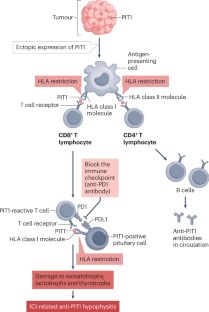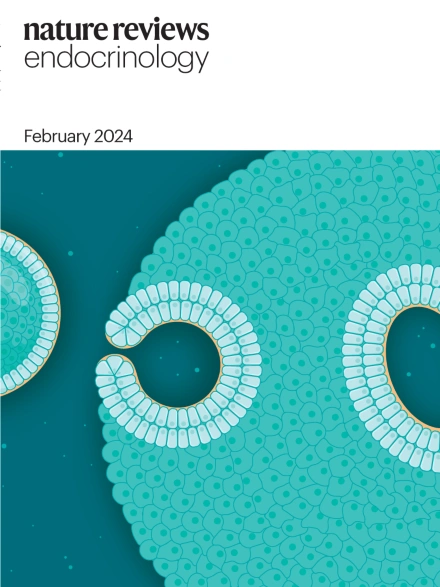免疫检查点抑制剂治疗后的抗 PIT1 下丘脑炎
IF 40
1区 医学
Q1 ENDOCRINOLOGY & METABOLISM
引用次数: 0
摘要
抗pit1垂体炎是副肿瘤自身免疫性垂体炎的一种形式。这种情况可归因于垂体特异性阳性转录因子1 (PIT1)在肿瘤组织中的异位表达,导致对PIT1阳性的垂体前叶细胞产生自身免疫。在过去的几年里,有报道称抗pit1垂体炎可以作为免疫检查点抑制剂相关的垂体炎发生。本文章由计算机程序翻译,如有差异,请以英文原文为准。


Anti-PIT1 hypophysitis after immune checkpoint inhibitor treatment
Anti-PIT1 hypophysitis is a form of paraneoplastic autoimmune hypophysitis. The condition is attributable to the ectopic expression of pituitary-specific positive transcription factor 1 (PIT1) in tumour tissues, which leads to autoimmunity against PIT1-positive anterior pituitary cells. In the past few years, it has been reported that anti-PIT1 hypophysitis can occur as an immune checkpoint inhibitor-related hypophysitis.
求助全文
通过发布文献求助,成功后即可免费获取论文全文。
去求助
来源期刊

Nature Reviews Endocrinology
医学-内分泌学与代谢
CiteScore
42.00
自引率
0.70%
发文量
158
审稿时长
6-12 weeks
期刊介绍:
Nature Reviews Endocrinology aspires to be the foremost platform for reviews and commentaries catering to the scientific communities it serves. The journal aims to publish articles characterized by authority, accessibility, and clarity, enhanced with easily understandable figures, tables, and other visual aids. The goal is to offer an unparalleled service to authors, referees, and readers, striving to maximize the usefulness and impact of each article. Nature Reviews Endocrinology publishes Research Highlights, Comments, News & Views, Reviews, Consensus Statements, and Perspectives relevant to researchers and clinicians in the fields of endocrinology and metabolism. Its broad scope ensures that the work it publishes reaches the widest possible audience.
 求助内容:
求助内容: 应助结果提醒方式:
应助结果提醒方式:


